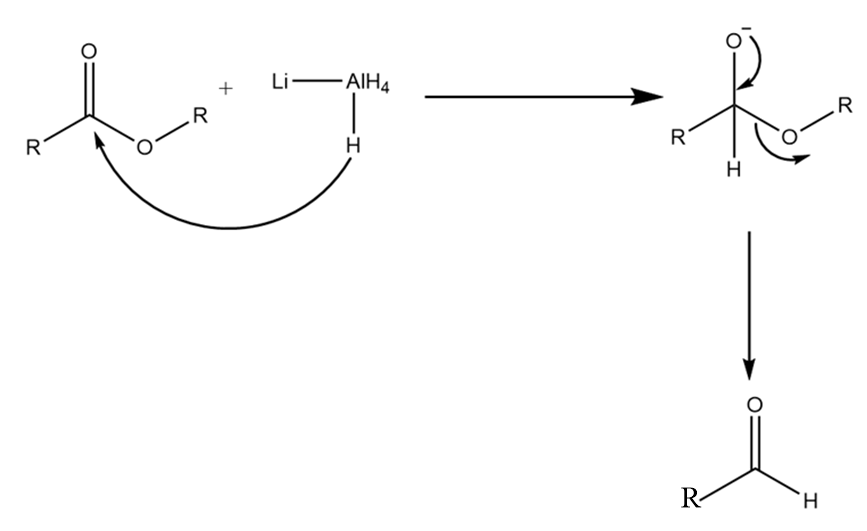Question
Question: How reduction of the following takes place: i.Reduction of acetaldehyde ii.Reduction of ester...
How reduction of the following takes place:
i.Reduction of acetaldehyde
ii.Reduction of ester
Solution
When a loss in oxygen atom i.e., an electronegative element or a gain in hydrogen atom i.e., electropositive element is observed within a compound during an organic reaction, then it is said to be a reduction reaction. The reduction of a compound leads to net decrease in the electronegativity of the compound.
Complete answer: The reduction of the given compounds takes place as follows:
(a) Reduction of acetaldehyde:
Step-1: Reaction of acetaldehyde with NaBH4 to form the respective sodium derivative along with the removal of BH3. The reaction takes place as follows:

Step-2: Protonation of the given compound occurs in the presence of water molecules to form primary alcohol. The reaction proceeds as follows:

Hence, formation of ethanol takes place on the reduction of acetaldehyde.
(b) Reduction of ester:
Step-1: The hydrogen ion from LiAlH4 attacks the carbonyl centre of the ester and formation of respective aldehyde takes place along with the removal of OR group. The reaction proceeds as follows:

Step-2: The hydrogen ion of LiAlH4 again attacks the carbonyl centre of aldehyde and the compound is reduced to its respective alcohol. The reaction proceeds as follows:

Hence, on reduction of ester the formation of primary alcohol takes place.
Note:
It is important to note that NaBH4 is a mild reducing agent and can only be used in the reduction reaction of aldehydes and ketones. It cannot be used for the reduction of carboxylic acids and esters. Only strong reducing agents like LiAlH4 can be used for the reduction of esters and acids.
